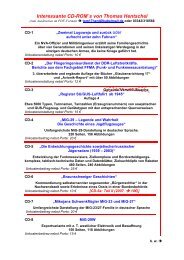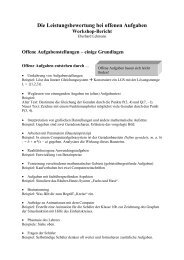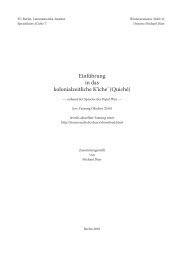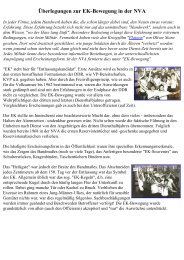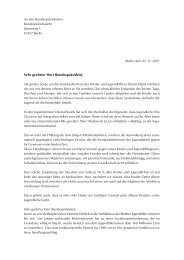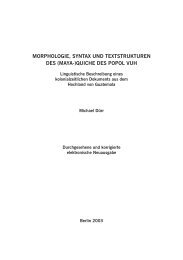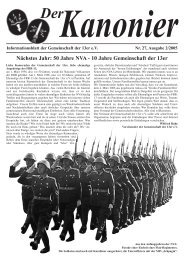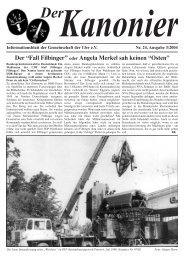SHADOW BOXING: INDONESIAN WRITERS ... - home . snafu . de
SHADOW BOXING: INDONESIAN WRITERS ... - home . snafu . de
SHADOW BOXING: INDONESIAN WRITERS ... - home . snafu . de
Create successful ePaper yourself
Turn your PDF publications into a flip-book with our unique Google optimized e-Paper software.
Shadow Boxing 161<br />
Seno's novel is as much an interrogation of the kawula-gustί ethos as the seditious<br />
satire mentioned above.<br />
For these writers, the most obvious method of questioning the feudal Javanese<br />
i<strong>de</strong>ology un<strong>de</strong>rpinning the New Or<strong>de</strong>r's cultural hegemony was to mo<strong>de</strong>rnize and<br />
humanize the wayang characters. For example, the wayang characters translated into<br />
Indonesian literary form were often <strong>de</strong>picted as "ordinary" Indonesians who<br />
performed their tasks in a routine manner. Admittedly, their tasks may have appeared<br />
glamorous to the average Indonesian. However, the manner in which these tasks were<br />
performed was often strikingly contemporary and quite mundane. For example, rather<br />
than Gatotkaca flying off completely unai<strong>de</strong>d as he does in the wayang, in one short<br />
story by Sapto Aji, Gatotkaca casually dons a jet-fighter helmet and climbs into an F-<br />
16. 11 Elsewhere, on the front cover of Wayang Semau Cue, an airborne Gatotkaca is<br />
pictured tangled in a kite. The front cover of Soebadio Sastrosatomo's Polίtίk<br />
Dosomuko Rezim Or<strong>de</strong> Baru (The Politics of Dosomuko's New Or<strong>de</strong>r Regime) 12 (1998) is<br />
distinguished by the striking image of the evil Dasamuka clutching an American dollar<br />
and a fifty-thousand rupiah note (characterized by the image of a smiling Suharto),<br />
whilst standing in a sea of five-hundred rupiah notes. 13 In a story by Pipit Rochijat,<br />
Kama takes to the Kurusetra battlefield in a Toyota jeep, and he is only hit by<br />
Aήuna's arrow when his driver Salya bogs the jeep down in some mud. 14 In contrast to<br />
this, Agusta Wibisono's duel between Arjuna and Kama in Balada Narasoma is<br />
highlighted by the two ksatria embracing each other, sharing a cigarette, and entering<br />
into a discussion of Kama's soon-to-be-completed novel. 15 It is precisely because these<br />
usually glamorous characters are ren<strong>de</strong>red so "ordinary" and "contemporary" that<br />
their message is doubly potent.<br />
This article will argue that literary reworkings of the wayang—and, for the<br />
purposes of this article, the Ramayana epic in particular—can be read as a means of<br />
"shadow-boxing" in the face of the New Or<strong>de</strong>r powers-that-be. "Shadow-boxing" can<br />
be <strong>de</strong>fined as boxing against an imaginary opponent. Extending this metaphor, the<br />
writers of wayang-based texts can be regar<strong>de</strong>d as shadow-boxers, their texts the<br />
shadows, and their "imaginary" opponent Suharto and his New Or<strong>de</strong>r regime. Just as<br />
a boxer only shadow-boxes whilst warming-up or practicing before a fight, Indonesian<br />
writers critical of the New Or<strong>de</strong>r state were in a sense imagining, foreshadowing, and<br />
enacting in their mind's eye the "real" fight to come in 1997 and 1998, the fight to<br />
overthrow Suharto. Besi<strong>de</strong>s emphasizing the ways in which various Indonesian writers<br />
mo<strong>de</strong>rnized and humanized the characters of the Ramayana, I will also try to reveal<br />
the various strategies of mediation that allowed the writers to "shadow-box" in the<br />
midst of the New Or<strong>de</strong>r, sometimes indirectly provoking or confronting the powers-<br />
11<br />
Sapto Aji, "Gatotkaca Gugur," Suαrα Mer<strong>de</strong>kα, May 25,1997.<br />
12<br />
Soebadio Sastrosatomo, Politik Dosomuko Rezim Or<strong>de</strong> Bαru: Rαpuh dan Sengsarakan Rakyat (Jakarta:<br />
Pusat Dokumentasi Politik "GUNTUR 49," 1998).<br />
13<br />
Five-hundred rupiah notes are characterized by the image of an orangutan. In the context of the front<br />
cover of Soebadio's text, the publisher claims that these notes represent "ketek-ketek yang mengabdi kepada<br />
tokoh Rama" (the monkeys who serve the hero Rama). See Soebadio, Politik Dosomuko, insi<strong>de</strong> cover.<br />
14<br />
Pipit Rochijat, Baratayuάa di Negeri Antah Berantah, pp. 38-44.<br />
15<br />
Agusta Wibisono, Balada Narasoma, pp. 107-111.



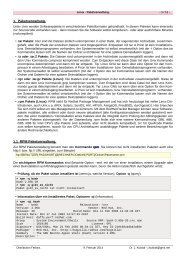
![Parameterdarstellungen [ x(t), y(t) ] Eberhard ... - home . snafu . de](https://img.yumpu.com/22517728/1/184x260/parameterdarstellungen-xt-yt-eberhard-home-snafu-de.jpg?quality=85)
